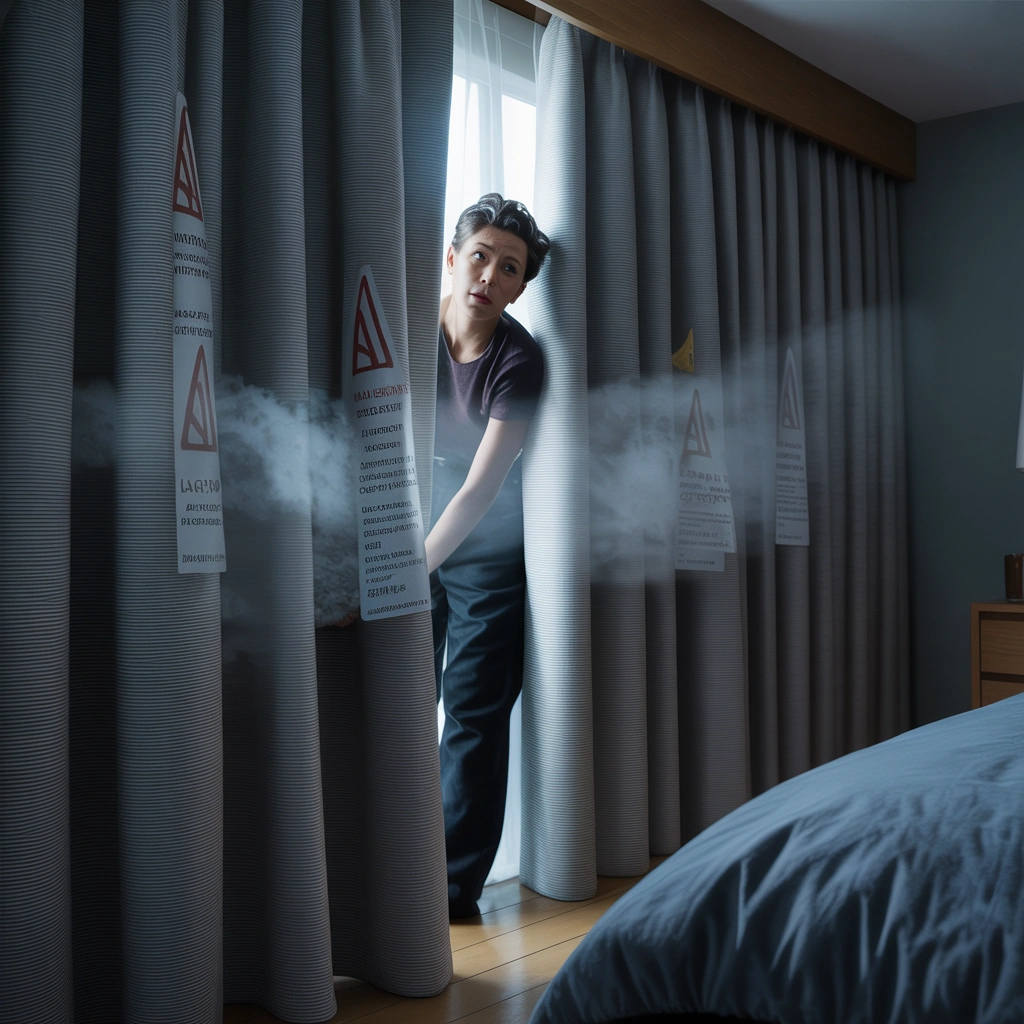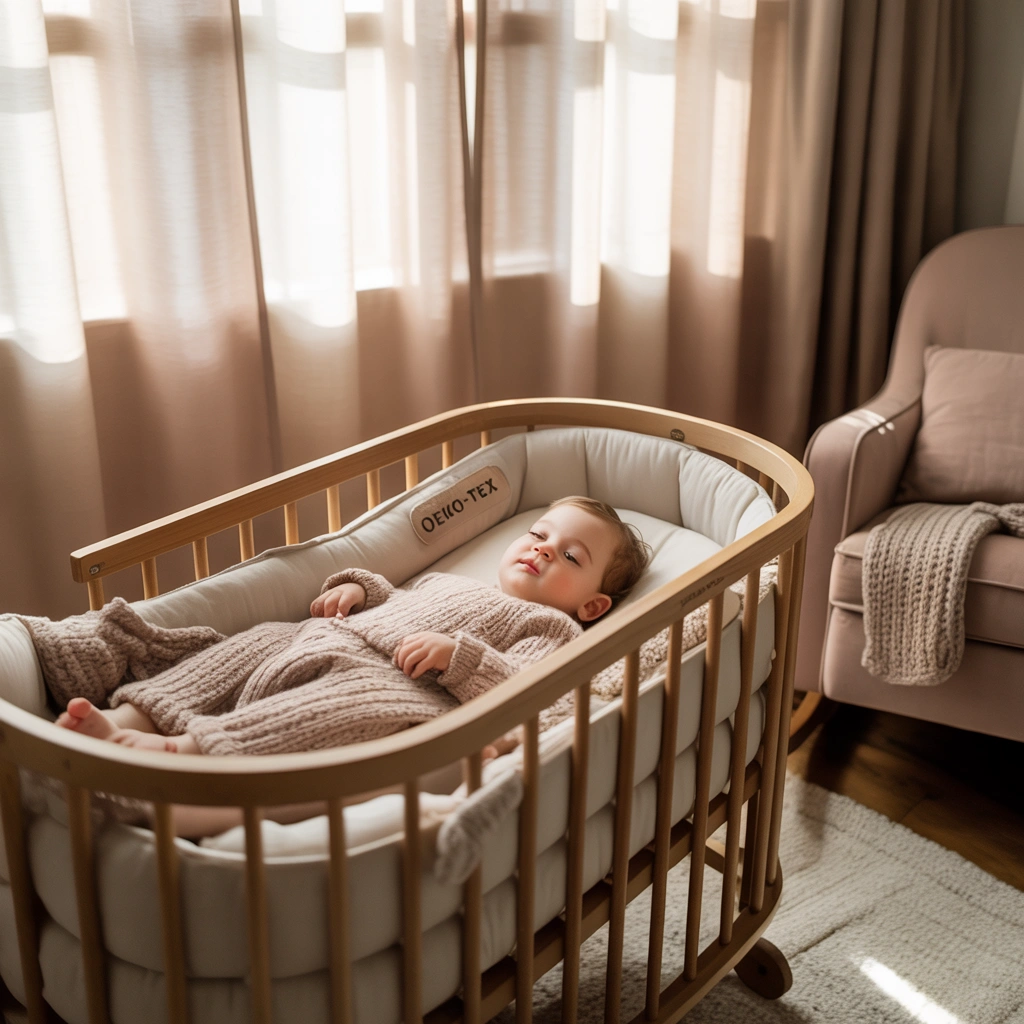Blackout curtains are everywhere! They’re used in bedrooms, hotels, nurseries, and even home theaters. Why? Because they block light, help you sleep better, and keep rooms cool. But are they as popular as they seem? Let’s find out!
Today, blackout curtains are a top choice for many homeowners. They’re especially loved by night owls, shift workers, and parents of young children. Some people use them to save energy by keeping rooms cooler in summer and warmer in winter. Others simply enjoy the cozy, dark environment they create.
If you’re curious about other curtain styles, check out this guide on Ripple Fold vs. Pinch Pleat Curtains.
1. What Exactly Are Blackout Curtains Made Of?
Blackout curtains are made of special fabrics that stop light from passing through. Here’s a closer look at the materials commonly used:
- Polyester: A strong, affordable fabric often used in blackout curtains. It’s soft and durable, but can sometimes trap heat.
- Cotton Blends: Eco-friendly and breathable, but less common. These are great for people who want natural materials.
- Synthetic Coatings: Many blackout curtains have a shiny backing made of PVC (polyvinyl chloride) or other chemicals. This layer blocks light completely.
Some curtains are layered with foam or rubber to add thickness. These materials make them heavier but more effective at blocking light and sound.
2. Are Blackout Curtains Toxic? What Does the Research Say?

This is the big question: Are blackout curtains toxic? The answer depends on the materials used.
The Truth About Off-Gassing
When blackout curtains are new, they might have a “plastic smell.” This is called off-gassing, which happens when chemicals like PVC or flame retardants release fumes into the air.
What does science say?
- A study by the Environmental Protection Agency (EPA) found that some synthetic materials used in curtains can release low levels of volatile organic compounds (VOCs).
- However, these levels are usually not harmful to healthy adults.
User Experiences:
- Many people report a mild smell that goes away after airing the curtains for a day or two.
- Some sensitive individuals, like those with asthma, might feel discomfort if curtains are not aired out first.
3. Which Materials in Blackout Curtains Should You Be Cautious About?
Is PVC (Polyvinyl Chloride) Harmful?
PVC is often used in blackout curtains because it’s cheap and effective at blocking light. However, PVC can release harmful chemicals like phthalates when exposed to heat or sunlight. These chemicals are linked to health issues like hormone disruption and respiratory problems.
What can be done?
- Always air out PVC curtains for 1–3 days before use.
- Choose curtains labeled “low VOC” or “non-toxic”.
Do Flame Retardants Pose a Risk?
Some blackout curtains are treated with flame retardants for safety. While this reduces fire risk, some flame retardants contain chemicals like polybrominated diphenyl ethers (PBDEs), which have been linked to developmental issues in children.
Tip:
- Look for curtains with natural flame-resistant fibers like wool or silk.
Are Synthetic Coatings Dangerous Indoors?
Synthetic coatings help block light but can trap odors. These coatings are usually made of acrylic or vinyl, which can emit fumes when new.
Solution:
- Wash or dry-clean curtains before hanging them.
- Open windows for fresh air during the first few days.
4. Are Blackout Curtains Safe for Babies and Kids?

What Risks Exist for Infants and Young Children?
Babies and young children breathe faster than adults, so they might be more affected by chemical fumes. Some parents worry about using blackout curtains in nurseries.
What experts say:
- Most experts agree that blackout curtains are safe for kids once aired out.
- Avoid curtains with strong plastic smells for baby rooms.
Parent Reviews:
- Many parents say blackout curtains help babies sleep better.
- Some suggest using organic cotton curtains instead of synthetic ones for safety.
5. Why Do Blackout Curtains Smell? Understanding Off-Gassing?
Why Do They Have a Plastic-Like Odor?
The smell comes from chemicals used in manufacturing. PVC, acrylic, and flame retardants are the main culprits.
How to Reduce the smell:
- Hang curtains outdoors for a day.
- Use a fan or air purifier to speed up the process.
How Long Does the Smell Last?
Usually 1–3 days if aired properly. If the smell lingers longer, consider washing or replacing the curtains.
Can It Affect Indoor Air Quality?
Yes, but only temporarily. Once aired out, the risk is minimal.
6. Do Blackout Curtains Improve Sleep Quality?
How Darkness Boosts Melatonin Production
Melatonin is a hormone that helps you fall asleep. Light, especially blue light, stops melatonin from being made. Blackout curtains block all light, helping your body produce more melatonin.
Science says:
- A study in the Journal of Clinical Sleep Medicine found that dark rooms improve sleep quality by up to 20%.
Do Users Sleep Better With Them?
Yes! Many users say they sleep more deeply and wake up less often.
What Science Has to Say
Darkness helps regulate your circadian rhythm, the body’s internal clock that controls sleep and wake cycles.
7. What Are the Disadvantages of Using Blackout Curtains?
Are There Hidden Health Risks?
Only if the curtains are made with toxic materials. Always check labels for certifications like OEKO-TEX or GreenGuard.
Do They Make Cleaning More Difficult?
Yes. Dust builds up easily on thick fabrics. Use a vacuum with a brush attachment or wipe them with a damp cloth. For more tips, check out A Step-by-Step Guide to Installing and Maintaining Your Curtains.
Can They Affect Room Ventilation and Mood?
Too much darkness can feel gloomy. Use blackout curtains only at night, and open them during the day for fresh air and natural light.
8. How Can You Reduce Chemical Exposure from Blackout Curtains?
- Air them out in sunlight for 1–2 days.
- Wash them if the label allows.
- Use a HEPA air purifier to remove lingering fumes.
- Choose low-VOC curtains (look for certifications like OEKO-TEX).
9. Are There Non-Toxic Alternatives to Traditional Blackout Curtains?
Can Organic Cotton Curtains Work?
Yes! Organic cotton is breathable and safe. While it doesn’t block 100% of light, it’s a great option for people with sensitivities.
Are Linen Blackout Panels a Better Option?
Linen is natural and eco-friendly, but might need a blackout liner for full light blockage.
Which Brands Offer Eco-Friendly Solutions?
Look for brands that use plant-based dyes and natural fibers. Some popular options include:
- Westpoint Home (certified non-toxic)
- NICETOWN (eco-friendly materials)
10. Should You Buy Blackout Curtains? Making an Informed Choice
How to Weigh the Pros and Cons
- Pros: Better sleep, cooler rooms, light control.
- Cons: Smells new when new, cleaning is needed.
What to Look for When Buying Safe Curtains
- Check for non-toxic labels.
- Avoid strong plastic smells.
- Read reviews for safety tips.
For more ideas on home decor, visit Grass Cloth Wallpaper vs. Peel-Stick Wallpaper.
Final Tip: Always air out new curtains and choose trusted brands!
11. Frequently Asked Questions (FAQs)
Yes, if aired out and non-toxic.
Only low-quality ones might.
Yes! They help make dark rooms.
Yes, but that’s their job!
Yes! Look for certifications.

